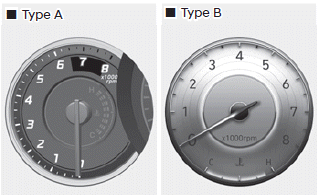Hyundai Elantra: Cruise Control System (CC) / Description and operation
Hyundai Elantra (CN7) 2021-2025 Service Manual / Advanced Driver Assistance System (ADAS) / Cruise Control System (CC) / Description and operation
| Description |
The cruise control system is engaged by the cruise "ON/OFF" main switch located on right of steering wheel column. The system has the capability to cruise, coast, accelerate and resume speed.
It also has a safety interrupt, engaged upon depressing brake or shifting select lever.
The ECM is the control module for this system. The main components of cruise control system are mode control switches, transmission range switch, brake switch, vehicle speed sensor, ECM and ETS motor that connect throttle body.
The ECM contains a low speed limit which will prevent system engagement below a minimum speed of 40km/h (25mph).
The operation of the controller is controlled by mode control switches located on steering wheel.
Transmission range switch and brake switch are provided to disengage the cruise control system. The switches are on brake pedal bracket and transmission. When the brake pedal is depressed or select lever shifted, the cruise control system is electrically disengaged and the throttle is returned to the idle position.
| Cruise main switch (CRUISE) |
The cruise control system is engaged by pressing the cruise "ON/OFF" main switch. Pressing the cruise "ON/OFF" main switch again releases throttle, clears cruise memory speed, and puts vehicle in a non-cruise mode.
| Set/Coast switch (SET/–) |
The "SET/–" switch located on right of steering wheel column has two functions.
The set function - Push the "SET/–" switch and release it at the desired speed. The SET indicator light in the instrument cluster will illuminate. Release the accelerator pedal. The desired speed will automatically be maintained.
The coast function - Push the "SET/–" switch and hold it when the cruise control is on. The vehicle will gradually slow down. Release the switch at the desired speed. The desired speed will be maintained.
Push the "SET/–" switch and release it quickly. The cruising speed will decrease by 2km/h or 1mph.
| Resume/Accel switch (RES/+) |
The "RES/+" switch located on right of steering wheel column has two functions.
The resume function - If any method other than the cruise “ON/OFF” main switch was used to cancel cruising speed temporarily and the system is still activated, the most recent set speed will automatically resume when the "RES/+" switch is pushed. It will not resume, however, if the vehicle speed has dropped below approximately 40km/h (25mph).
The accel function - Push the "RES/+" switch and hold it when the cruise control is on. The vehicle will gradually accelerate. Release the switch at the desired speed. The desired speed will be maintained.
Push the "RES/+" switch and release it quickly. The cruising speed will increase by 2km/h or 1mph.
| Cancel switch (CANCEL) |
The cruise control system is temporarily disengaged by pushing the "CANCEL" switch.
Cruise speed canceled by this switch can be recovered by pushing the "RES/+" switch.
 Troubleshooting
Troubleshooting
Trouble Symptom ChartsTrouble Symptom 1Trouble Symptom 2
Trouble symptom
Probable cause
Remedy
The set vehicle speed varies greatly upward or downward"Surging" (repeated alternating acceleration and deceleration) occurs after settingMalfunction of the vehicle speed sensor circuitRepair the vehicle speed sensor system..
Other information:
Hyundai Elantra (CN7) 2021-2025 Service Manual: Components and components location
Components1. Front impact sensor (FIS)2. Supplemental Restraint System Control Module (SRSCM)3. Front impact sensor (FIS)4. Gravity side Impact Sensor (G-SIS)5. Pressure Side Impact Sensor (P-SIS)..
Hyundai Elantra (CN7) 2021-2025 Service Manual: Description and operation
DescriptionThe Seat Belt Pretensioners (BPT) are installed inside center pillar (LH & RH). When a vehicle crashes with a certain degree of frontal impact, the pretensioner seat belt helps to reduce the severity of injury to the front seat occupants by retracting the seat belt webbing. This prevents the front occupants from thrusting forward and hitting the steering wheel or the instrument pane..
Copyright © 2025 www.helantra7.com


